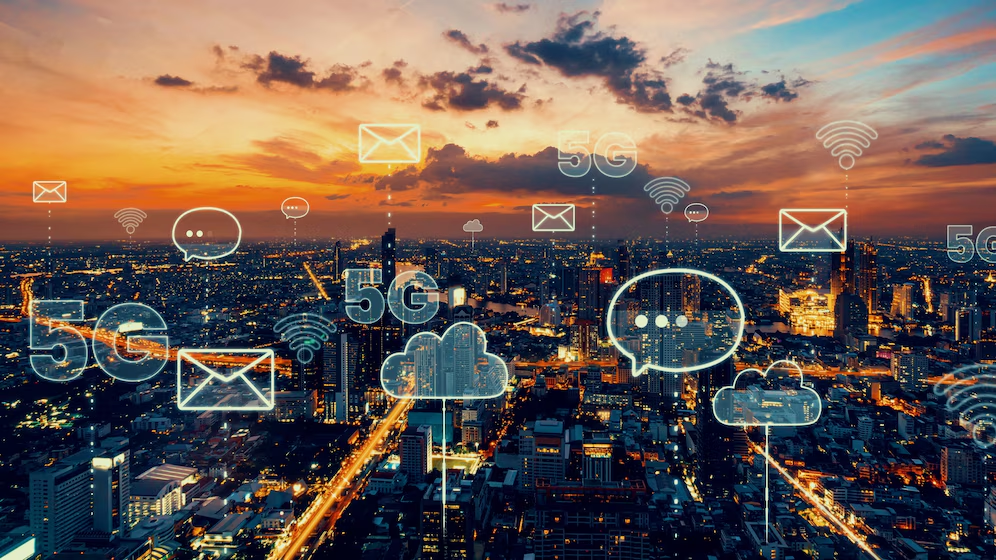Introduction
Digital communication has transformed how we connect, interact, and share ideas across the globe. Whether through email, social media, or instant messaging, It has streamlined conversations and allowed for faster, more convenient exchanges. As we become increasingly reliant on digital tools, understanding how to use these channels effectively becomes essential.
In this article, we will explore in-depth, discussing various types, benefits, tools, and strategies for effective online communication. You’ll discover how to navigate digital communication’s advantages and challenges and gain insight into how to improve your own interactions.
What is digital communication?
It is, in essence, the exchange of information, ideas, and messages using digital channels. These channels include online platforms, social media, email, video conferencing, and instant messaging. Unlike traditional communication methods, however, it relies on technology to facilitate conversations.
Consequently, it has become central in both personal and professional environments, allowing individuals and organizations to connect regardless of physical distance.
Types of digital communication
It covers a broad spectrum of methods that fit different needs and purposes. Here are some of the most common types:
- Email Communication: Frequently used in professional settings for sending formal and detailed messages.
- Social Media Communication: Platforms like Facebook, Instagram, and Twitter foster casual, real-time interaction and idea-sharing.
- Video Conferencing: Tools like Zoom and Microsoft Teams offer face-to-face interaction regardless of location.
- Instant Messaging: Apps like WhatsApp and Slack enable quick, informal messaging for fast responses.
- Forums and Community Platforms: Spaces like Reddit and Quora offer topic-focused discussions and allow users to share information and ask questions.
Why digital communication Matters Today
With technological advancements, It has become vital in bridging gaps across distances, cultures, and time zones. Here are some of the reasons digital communication is so important today:
- Enhanced Reach: Digital channels allow you to connect with a global audience, reaching individuals you may never meet.
- Speed and Efficiency: Messages are delivered almost instantly, enabling quick responses and faster decision-making.
- Flexibility and Accessibility: You can communicate anytime and anywhere, allowing for greater convenience.
- Engagement and Interaction: Digital platforms encourage active participation, helping build relationships and fostering a sense of community.
- Record Keeping: The tools often have storage features, enabling easy access to past messages and conversations.
Advantages of digital communication
It has numerous benefits for personal interactions, business dealings, and customer service. Let’s explore these advantages:
- Global Connectivity: It connects people worldwide, expanding our networks and enhancing cultural exchange.
- Reduced Costs: It is eliminates the need for physical mail, travel, and other expenses associated with traditional communication.
- Convenience: Communicate with others instantly without needing to meet in person.
- Efficiency in Business: The streamlines processes, allowing businesses to reach customers quickly and respond to inquiries efficiently.
- Environmentally Friendly: Reducing paper use by shifting to digital communication is eco-friendly and conserves natural resources.
Key Tools for Effective digital communication
Several digital tools make online communication seamless and effective. Here are some of the most popular:
- Email Platforms: Gmail, Outlook, and Yahoo Mail provide easy-to-use interfaces for sending and receiving emails.
- Video Conferencing Tools: Zoom, Google Meet, and Microsoft Teams support remote meetings and video-based interactions.
- Instant Messaging Apps: WhatsApp, Slack, and Telegram offer real-time text messaging for informal or quick communication.
- Social Media Platforms: Facebook, Twitter, LinkedIn, and Instagram allow for social engagement, branding, and information sharing.
- Project Management Tools: Asana, Trello, and Monday.com help teams communicate on project progress, deadlines, and tasks.
How to Improve Your digital communication Skills
Effective digital communication requires skills that help convey your message clearly and respectfully. Here are some tips to enhance your online communication:
- Use Clear Language: Avoid jargon and use simple words for better comprehension.
- Be Concise: Get to the point quickly, as attention spans are shorter online.
- Practice Active Listening: Pay attention to responses and feedback to ensure a two-way conversation.
- Stay Professional: Maintain politeness, even in informal digital settings.
- Consider Your Audience: Tailor your message to fit the preferences and expectations of your audience.
digital communication in the Workplace
In business, a streamlines processes, enables remote work, and fosters teamwork. Here’s how it impacts the workplace:
- Remote Collaboration: Teams can work together without being in the same location, enhancing flexibility.
- Improved Customer Service: Digital tools enable quick responses to customer inquiries, improving satisfaction.
- Efficient Project Management: Teams can track progress, share files, and keep everyone informed on digital platforms.
- Employee Engagement: Online communication fosters a sense of community, allowing employees to feel more connected.
Challenges in digital communication
Despite its advantages, It has some challenges. Being aware of these helps us prepare and adapt better:
- Lack of Personal Touch: Non-verbal cues, such as body language, are often lost in digital communication.
- Misinterpretation of Tone: Messages may be misinterpreted due to the absence of vocal tone or body language.
- Overload of Information: The volume of digital messages can lead to information overload and decreased productivity.
- Security Concerns: Cybersecurity risks, such as phishing and hacking, threaten the privacy of digital communications.
- Distractions and Multitasking: It can lead to reduced focus due to frequent notifications and the temptation to multitask.
Best Practices for Effective digital communication
Here are some best practices to help you communicate effectively in a digital setting:
- Choose the Right Platform: Select the most suitable platform depending on the nature of your message.
- Respect Boundaries: Avoid sending messages during off-hours or holidays unless necessary.
- Use Visuals Wisely: Images, videos, and charts can enhance clarity but should be used appropriately.
- Keep Messages Organized: Organize emails and chats to make it easier to refer back to important points.
- Be Mindful of Privacy: Be careful about sharing sensitive information and use secure platforms when needed.
Future of digital communication
The future of digital communication, indeed, promises exciting advancements with the integration of artificial intelligence, virtual reality, and augmented reality. Here’s what to expect:
- AI-Powered Customer Support: AI will streamline customer service, allowing businesses to respond instantly.
- VR and AR Integration: These technologies will enable more immersive communication experiences, particularly for remote meetings.
- Increased Automation: Routine tasks, such as scheduling, will become automated, simplifying the communication process.
- More Personalized Experiences: AI will tailor digital interactions to user preferences, enhancing customer satisfaction.
Exploring the Future of Technology with XRQRES
Conclusion
Undoubtedly, it has reshaped how we connect, work, and interact in the modern world. By embracing its benefits and, furthermore, learning to overcome its challenges, we can use digital communication effectively to enhance both our personal and professional lives. Looking ahead into the future, the role of digital communication will only continue to grow, offering even more dynamic ways to connect. Whether you’re using it primarily for business or, alternatively, for personal purposes, understanding tools can indeed transform how you engage with the world around you.
FAQs
How does digital communication differ from traditional communication?
It relies on technology and digital channels, whereas traditional communication involves face-to-face or paper-based methods.
What are some examples of digital communication?
Examples include email, social media, instant messaging, video conferencing, and community forums.
Why is digital communication important?
It enables fast, convenient communication, connecting people globally and supporting remote work and digital collaboration.
What challenges arise with digital communication?
Challenges include potential misinterpretation, cybersecurity risks, information overload, and a lack of personal connection.
How can I improve my digital communication skills?
Use clear language, practice active listening, be concise, and choose the right platform for each message.
What role does digital communication play in business?
The improves customer service, enhances teamwork, and enables remote work, making it essential in today’s workplace.










